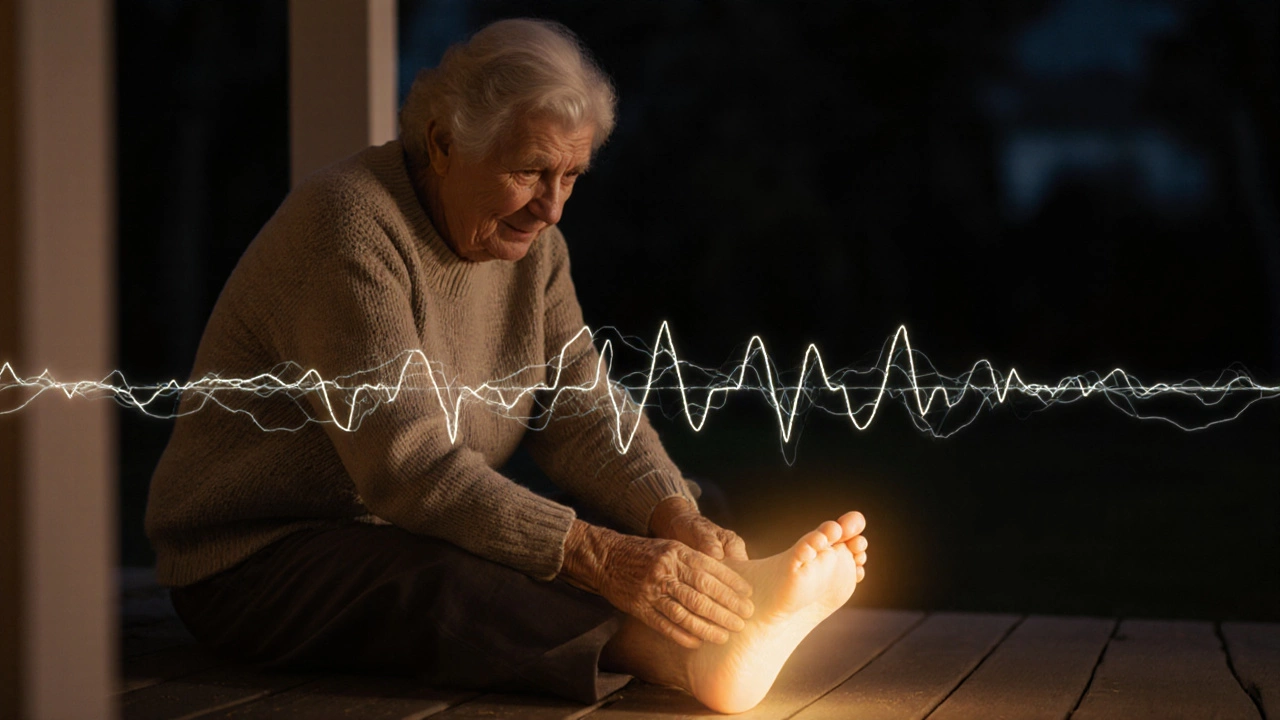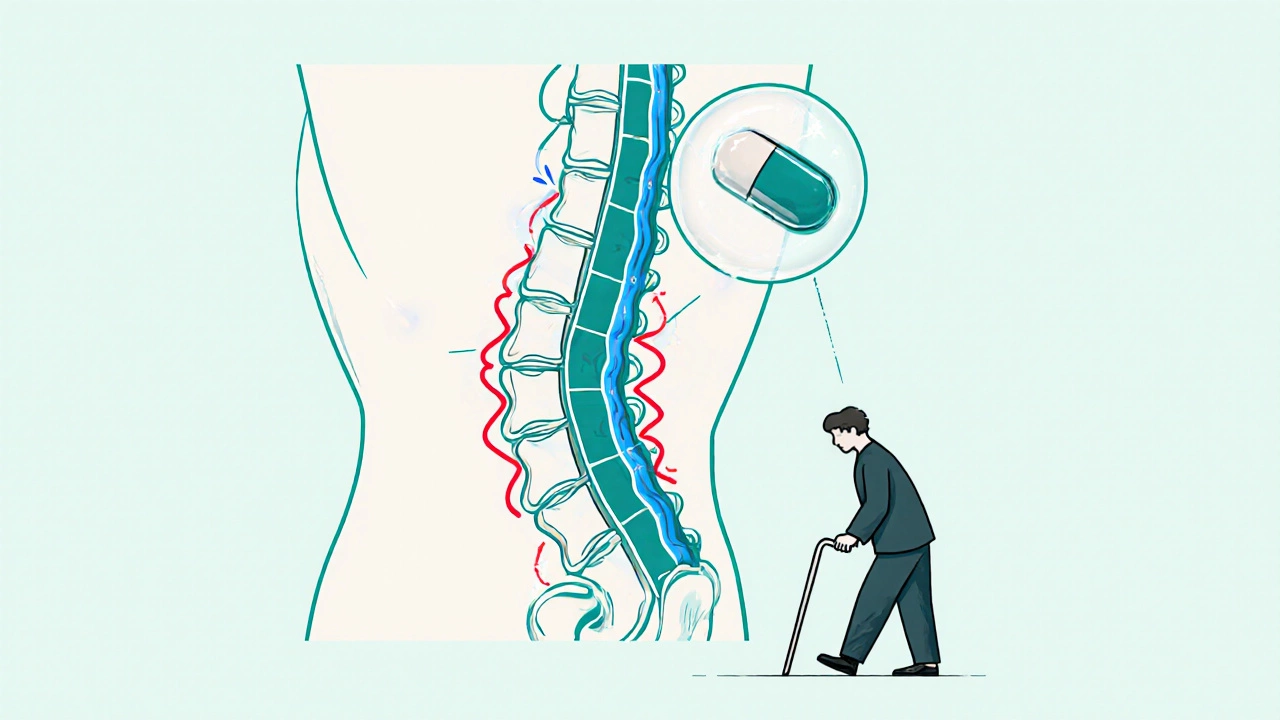 Nov, 20 2025
Nov, 20 2025
Many people reach for gabapentin thinking it’s a strong painkiller like oxycodone or morphine. But it doesn’t work the same way-and that’s where the confusion starts. If you’re dealing with nerve pain from diabetes, shingles, or a spinal injury, gabapentin might be part of your treatment. But if you’re hoping it’ll knock out a bad backache or a sprained ankle like ibuprofen or codeine, you’re setting yourself up for disappointment.
Gabapentin isn’t a typical painkiller
Gabapentin doesn’t reduce inflammation or block pain signals the way NSAIDs or opioids do. Instead, it calms overactive nerves. Think of it less like a sledgehammer and more like a volume knob turned down on your nervous system. When nerves send too many pain signals-like in diabetic neuropathy or postherpetic neuralgia-gabapentin helps quiet them down. It doesn’t stop the source of the pain, but it makes the signal less loud.
That’s why it works for some types of pain and not others. If your pain comes from damaged or irritated nerves, gabapentin can be a game-changer. If it’s from a muscle strain, arthritis, or a broken bone, you’ll likely see little to no benefit. A 2023 review in The Lancet Neurology found gabapentin significantly reduced nerve pain in about 40% of patients, but only 10% got complete relief. Most people saw a 30-50% drop in pain scores-not a cure, but often enough to improve sleep and daily function.
What kind of pain does gabapentin actually help?
Gabapentin is FDA-approved for three specific nerve pain conditions:
- Postherpetic neuralgia (pain after shingles)
- Diabetic peripheral neuropathy
- Focal seizures (in adults)
Doctors also prescribe it off-label for other nerve-related issues like fibromyalgia, sciatica, and some types of chronic back pain-especially when there’s a burning, tingling, or electric-shock quality to the pain. It’s rarely used for mechanical pain, like a herniated disc pressing on a nerve without nerve damage, or for general joint pain.
One patient I spoke with in Auckland, a 62-year-old teacher with diabetic neuropathy, said her feet used to feel like they were on fire. After six weeks on gabapentin, the burning dropped from an 8/10 to a 4/10. She still had pain, but she could walk to the store again. That’s the goal-not total elimination, but enough relief to get back to life.
Why gabapentin feels like a ‘strong’ painkiller to some
Some people report feeling relaxed, drowsy, or even euphoric on gabapentin-especially at higher doses. That’s not pain relief. That’s the drug affecting brain chemistry. It’s why gabapentin has been misused, sometimes mixed with opioids or alcohol. In New Zealand, prescriptions are monitored under the Controlled Drugs System because of this risk.
That’s also why it’s not a first-line treatment. Doctors don’t hand it out like aspirin. It’s usually tried after simpler options like acetaminophen, topical lidocaine, or low-dose antidepressants (like amitriptyline) have failed. The side effects-dizziness, drowsiness, swelling in the hands or feet-can be significant, especially in older adults.

How long does it take to work?
Gabapentin doesn’t kick in the next day. Most people start feeling effects after 1-2 weeks, but it can take 4-6 weeks to reach the full benefit. The dose usually starts low-100-300 mg at night-and is slowly increased every few days. Jumping to a high dose won’t speed things up. It just increases side effects.
One study in the Journal of Pain Research followed 200 people with nerve pain. Those who took 900 mg daily saw modest improvement. Those on 1,800 mg saw slightly better results-but also twice as many dizziness episodes. The sweet spot for most is between 900 and 1,800 mg per day, split into three doses.
What are the alternatives if gabapentin doesn’t work?
If gabapentin doesn’t help after 6-8 weeks, it’s time to reassess. Other options include:
- Pregabalin (Lyrica) - Similar to gabapentin but faster-acting and more predictable in dosing. Often more expensive.
- Duloxetine (Cymbalta) - An antidepressant that also helps nerve pain. Good for people with both pain and depression.
- Topical treatments - Lidocaine patches or capsaicin cream applied directly to painful skin areas.
- Physical therapy - Especially for sciatica or spinal nerve pain. Movement often helps more than pills.
- Nerve blocks or spinal cord stimulation - For severe, long-term cases.
There’s no one-size-fits-all. What works for one person might do nothing for another. That’s why treatment is personalized. A 2024 study from the University of Auckland tracked 300 chronic pain patients and found that combining gabapentin with graded exercise improved outcomes by 60% compared to gabapentin alone.

Can you stop gabapentin suddenly?
No. Stopping gabapentin abruptly can cause withdrawal symptoms-sweating, anxiety, insomnia, even seizures in rare cases. If you want to stop, your doctor will help you taper down slowly over weeks or even months.
Some people stay on it long-term because it works. Others try it for a few months, then stop if it doesn’t help. There’s no rule. But never quit cold turkey.
Is gabapentin addictive?
It’s not addictive in the same way opioids are. You won’t crave it for the high. But your body can become dependent on it. That’s different. Dependence means your nervous system adapts to the drug. If you stop suddenly, it overreacts. That’s why tapering matters.
The risk of misuse is higher in people with a history of substance abuse. That’s why doctors screen carefully before prescribing. If you’ve struggled with alcohol or painkillers before, tell your doctor. There are safer alternatives.
What’s the bottom line?
Gabapentin isn’t a strong painkiller. It’s a nerve calmer. It won’t help your knee arthritis or a pulled muscle. But if your pain is burning, shooting, or tingling-especially from nerve damage-it can make a real difference. It’s not magic. It’s not fast. And it’s not for everyone. But for the right person, it’s one of the few tools that actually softens the noise of chronic nerve pain.
If you’re considering gabapentin, ask your doctor: Is my pain nerve-related? What’s the plan if it doesn’t work? What side effects should I watch for? Don’t assume it’s just another pain pill. It’s a targeted tool-and like any tool, it only works in the right hands.
Is gabapentin stronger than ibuprofen for pain?
No. Gabapentin and ibuprofen work in completely different ways. Ibuprofen reduces inflammation and works well for headaches, muscle pain, or arthritis. Gabapentin doesn’t reduce swelling or block general pain signals. It only helps nerve pain. For a sprained ankle, ibuprofen wins. For burning feet from diabetes, gabapentin might be the better choice.
Can you take gabapentin with other painkillers?
Yes, but only under medical supervision. Gabapentin is often combined with acetaminophen or low-dose opioids for severe nerve pain. But mixing it with alcohol, benzodiazepines, or strong opioids increases drowsiness and breathing risks. Never combine it with other sedatives without your doctor’s approval.
Does gabapentin help with back pain?
Only if the back pain has a nerve component-like sciatica where a pinched nerve causes shooting pain down the leg. For general lower back pain from muscle strain or degenerative discs without nerve involvement, gabapentin usually doesn’t help. Physical therapy and movement are more effective in those cases.
How long should you stay on gabapentin?
There’s no fixed timeline. Some people take it for months, others for years. If it helps and side effects are manageable, long-term use is common. But if there’s no improvement after 6-8 weeks, your doctor will likely switch you to another option. Regular check-ins are key-don’t just stay on it because you started.
Is gabapentin safe for older adults?
It can be, but with caution. Older adults are more sensitive to side effects like dizziness and confusion, which increase fall risk. Doctors usually start with lower doses (like 100 mg once daily) and increase slowly. Kidney function matters too-gabapentin is cleared by the kidneys, so dosage needs adjustment if kidney health is poor.
Are there natural alternatives to gabapentin for nerve pain?
Some people find relief with alpha-lipoic acid, vitamin B12, or acupuncture, especially for diabetic neuropathy. Studies show modest benefits, but none match the consistency of gabapentin or pregabalin. Natural doesn’t mean safer or stronger. Always talk to your doctor before replacing prescribed treatment.
